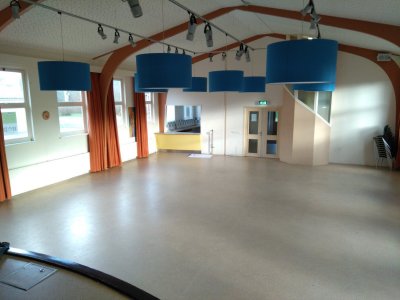wing
Senior Member
I would and currently do some combination between A & B, my "A" being a lot smaller than described. That is to say, I actually have an extensive background in audio recording and engineering (assisted at a recording studio in my younger days) and at home I've built a little recording space which is sufficient for recording myself as well as soloist friends depending on the instrument (I've recorded vocals, guitars, and smaller individual strings). I also frequently do small overdubs like percussion etc. Over the years I've collected a decent collection of nice mics and outboard gear (though nothing quite like Neumann U47s or anything). In my case, however, my space is small, but it's been acoustically treated to hell and back, so it's quite dry and most forgiving for vocals, smaller instruments, and overdubs, where I can capture things very dry and process them as needed with convolution reverbs to place them in a larger space, if that's what I'm going for. In a mix it's actually pretty believable, sounding like I record in a much nicer and larger space than I actually do. Of course that comes with both experience and lots of post processing.
It all depends on many variables but in all my experience, the larger and/or louder the instrument, the less forgiving this becomes. Recording drums, brass, or a string ensemble in a home studio like mine honestly isn't worth the trouble of how much I'd have to do in post to make it sound good. Instruments like those really do benefit from being recorded in a proper studio space – especially true with ensembles. So for me, that's where "B" comes in – if I have the budget I'd rather just rent a really nice studio with an engineer for the day. Granted, I say this because it's not something I personally need to do that often.
So I guess what I'm saying is, if you can afford the time, money, and energy to invest in your own space, go for it! But just know a proper recording space is a lot from both a financial and technical standpoint. That's why for me a combination of A & B makes sense - have a manageable and decent home studio for your daily needs, and then go into a high-end studio when the project calls for it. Good luck!
It all depends on many variables but in all my experience, the larger and/or louder the instrument, the less forgiving this becomes. Recording drums, brass, or a string ensemble in a home studio like mine honestly isn't worth the trouble of how much I'd have to do in post to make it sound good. Instruments like those really do benefit from being recorded in a proper studio space – especially true with ensembles. So for me, that's where "B" comes in – if I have the budget I'd rather just rent a really nice studio with an engineer for the day. Granted, I say this because it's not something I personally need to do that often.
So I guess what I'm saying is, if you can afford the time, money, and energy to invest in your own space, go for it! But just know a proper recording space is a lot from both a financial and technical standpoint. That's why for me a combination of A & B makes sense - have a manageable and decent home studio for your daily needs, and then go into a high-end studio when the project calls for it. Good luck!







